Scenery in the departure city
Beijing 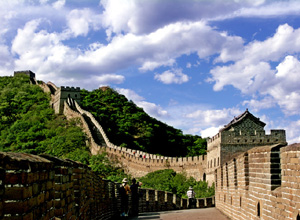
What to see in BeijingThere are many great historical sites in Beijing, including the Forbidden City, and the Great Wall passes nearby. With the biggest central square in the world - Tian'anmen Square, the Forbidden City that is the largest and best-preserved imperial palace complex, a superbly preserved section of the Great Wall, as well as the largest sacrificial complex in the world - the Temple of Heaven, Beijing attracts both domestic and foreign China travellers who all come to wonder at its century-old history and unique cultural relics.
Travel around Beijing, you can find not only the ancient style buildings like Hutong and Siheyuan, but also find much in common with any other great metropolis elsewhere in today's world. There are towering skyscrapers; busy shopping malls and an endless stream of traffic that makes the city much the same as others. The most famous and popular commercial circles and commercial pedestrian streets are predominantly located near the Yansha Shopping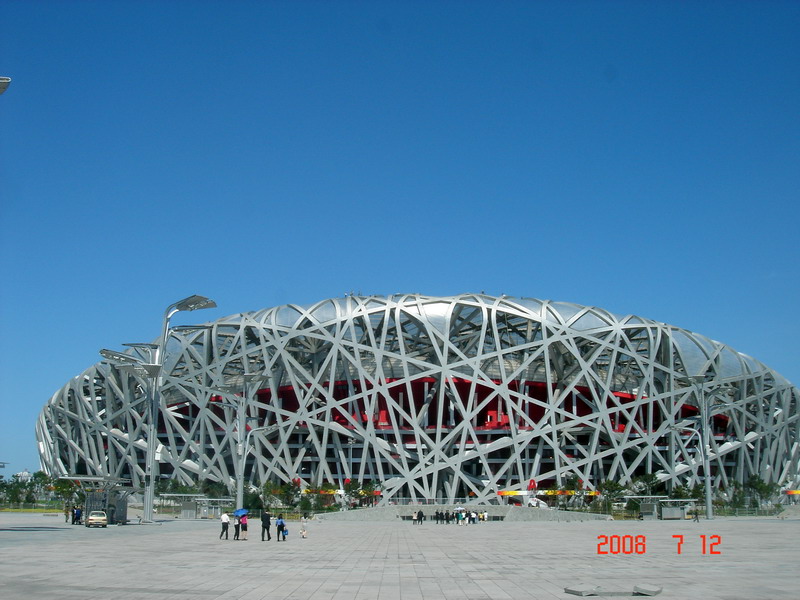 Mall, Tiananmen and Wangfujing Street, Guomao Shopping Mall, Qianmen Street and Xidan Street, etc. However, although you will find multinational chains with their own brands to offer, nowhere else on earth will you find such a variety of gourmet Chinese restaurants offering the very best of the eight different styles of Chinese cuisine as well as western style dishes. Modern hotels abound, each offering the highest standards of service and convenience.
Mall, Tiananmen and Wangfujing Street, Guomao Shopping Mall, Qianmen Street and Xidan Street, etc. However, although you will find multinational chains with their own brands to offer, nowhere else on earth will you find such a variety of gourmet Chinese restaurants offering the very best of the eight different styles of Chinese cuisine as well as western style dishes. Modern hotels abound, each offering the highest standards of service and convenience.
Xi an 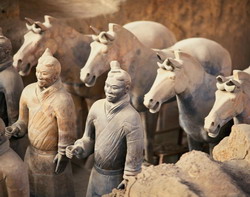
Terracotta Warriors is the most famous in Xian, In 1974, a number of peasants accidentally discovered some ancient bronze weapons and pieces of broken terra cotta armored warriors while sinking a well at the northern foot of Mt. Lishan, 35 km from Xi'an, the famous cultural city in China's history. other wise there are some other scenic spots are worthying of visiting , such as City Wall, Huaqing chi and etc..
Terracotta Army Pit No.1
This vault opened to visitors in 1979. It measures about 210 meters long and 62 meters wide and the bottom of the pit varies from 4.5 meters to 6.5 meters below ground level. Ten earthen walls were built at intervals of 2.5 meters, forming 9 circling corridors. About 6000 terracotta figures of soldiersand horses face east in a rectangular array, each one either armed long spear, dragger or halberd. The vanguard appears to be three rows of infantry who stand at the easternmost end of the army. Close behind is the main force of armored soldiers holding weapons, accompanied by 38 horse-driven chariots.
Chengdu 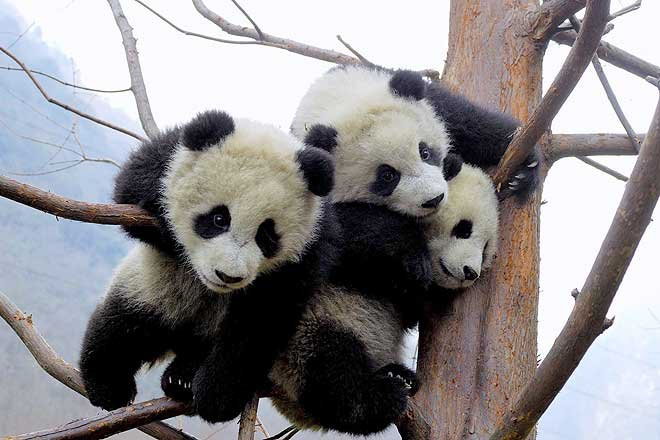
As the capital of Sichuan, Chengdu is located in the west of Sichuan Basin and the hinterland of Chengdu Plain with an area of about 12.4 thousand sq km (3 million acres). It has a mild subtropical monsoon climate. The population is more than 10 million people. Regarded as the starting point of the Southern Silk Road leading towards Europe, it has historically played an important role in the political, economical, cultural and military development of the southwest China. As a matter of fact, Chengdu is famous for its three unique characteristics, that is, 'Heavenly Scenery', 'Bashu (one title of Sichuan) Culture' and 'Hometown of Pandas'.
Sipping fragrant tea and tasting some uniquely delicious dishes while sitting quietly in a teahouse and having the opportunity to enjoy the local opera, an eyeful cotton roses and ginkgos as well as delicate embroideries, where on the earth can a cozy life appear like this? It is just the common daily life of Chengdu, the capital of the well known 'the land of Abundance' (Tian Fu Zhi Guo) of Sichuan Province. It is also called 'a city where one would not think of leaving once there '.
Chengdu is blessed with many rare and valuable natural resources that include dove trees, the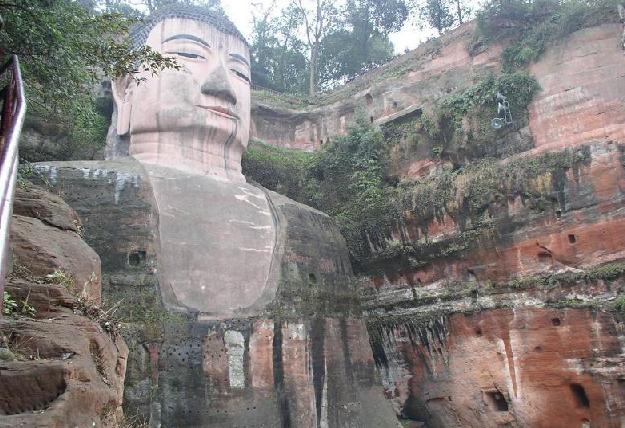 gingkoes or city tree, the cotton roses or city flower and hundreds of Chinese medicines plants. Wild animals like giant pandas, lesser pandas and snub-nosed monkeys and others can be found here. Chengdu has the panda breeding and research centre that is ranked first-class across the world. Chengdu Zoo is also where one can see the cute pandas, but it is a better choice to see the panda in the breeding base in Futou hill (in the northern of Cherngdu ) The charming scenery of Chengdu comprises mainly the fairylands of Jiuzhaigou Scenic Area and the nearby Huanglong Valley. They are both listed in the World Natural and Cultural Heritage.There is a saying that goes like this: 'It is not necessary to see other mountains when returning from Mt. Huangshan or water from Jiuzhaigou' . The world famous Grand Buddha in Leshan is only cost you 2 hours time from Chengdu, and Sanxingdui ruins will only surprise you in 1 hour time .
gingkoes or city tree, the cotton roses or city flower and hundreds of Chinese medicines plants. Wild animals like giant pandas, lesser pandas and snub-nosed monkeys and others can be found here. Chengdu has the panda breeding and research centre that is ranked first-class across the world. Chengdu Zoo is also where one can see the cute pandas, but it is a better choice to see the panda in the breeding base in Futou hill (in the northern of Cherngdu ) The charming scenery of Chengdu comprises mainly the fairylands of Jiuzhaigou Scenic Area and the nearby Huanglong Valley. They are both listed in the World Natural and Cultural Heritage.There is a saying that goes like this: 'It is not necessary to see other mountains when returning from Mt. Huangshan or water from Jiuzhaigou' . The world famous Grand Buddha in Leshan is only cost you 2 hours time from Chengdu, and Sanxingdui ruins will only surprise you in 1 hour time .
Xining
As the capital city of Qinghai Province, Xining is the provincial center of politics, economy, culture,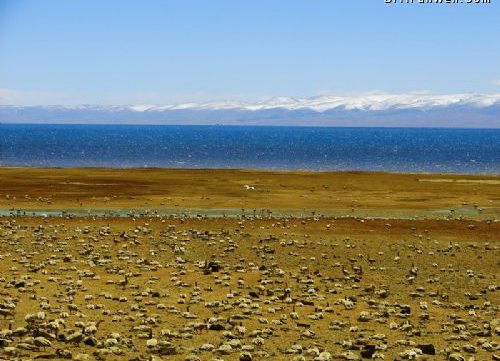 education, technology, transportation and commerce. Xining lies in the eastern part of Qinghai-Tibet plateau, and the upper reaches of Shuang Shui River. The average altitude of the urban area is 2275 meters. It is not very cold in winter and not very hot in summer, belonging to the typical continental climate with highland features. The average annual temperature is 7.7 degree Celsius, and the annual rainfall is 425 millimeter.
education, technology, transportation and commerce. Xining lies in the eastern part of Qinghai-Tibet plateau, and the upper reaches of Shuang Shui River. The average altitude of the urban area is 2275 meters. It is not very cold in winter and not very hot in summer, belonging to the typical continental climate with highland features. The average annual temperature is 7.7 degree Celsius, and the annual rainfall is 425 millimeter.
Xining acts as one of the major gateways to the Tibetan Plateau. It is an ancient highland city on the Yellow River which offers many scenic spots and historical sites. Although the city itself has a strong Islamic flavor, as it is home to many Hui people, you will start getting a more Tibetan feel as you move away from the city.
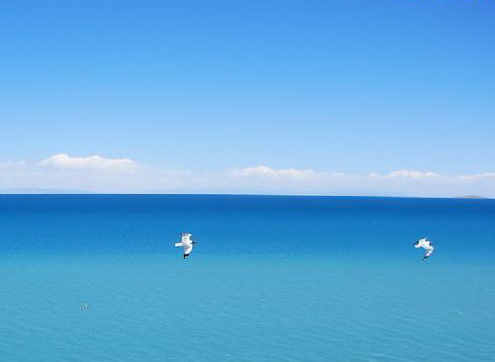
Xining is also called the Summer Resort Capital of China for its cool summer. There are some nice places to explore in the summer/autumn season. 150 km from Xining, Qinghai Lake provides an escape from fervent cities and allows you to experience beautiful natural sceneries. The Birds Island at Qinghai Lake can offer you a perfect chance to see flocks of different birds. To the southwest of Xining, is Ta'er Monastery - the birthplace of Tsongkhapa (the founder of Gelugpa Sect). To the north of Xining is the Beichan Temple. Tourists will be rewarded with a panoramic view of the city from the mountaintop. Another site at city downtown not to be missed is the Dongguan Mosque, one of the biggest mosques in northern China.
Chongqing
The area known as Chongqing became the capital of the Ba State in the 11 century BC under the mythical King of the Yu. By the 12th Century AD, this small city had grown in size and was renamed Chongqing, 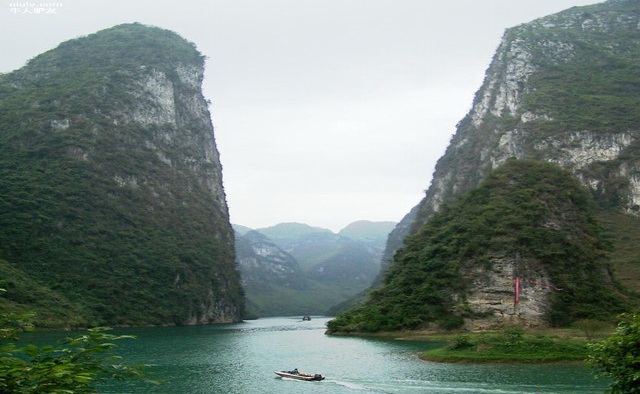 meaning "Double happiness" in Chinese.
meaning "Double happiness" in Chinese.
If other major cities in China are undergoing face-lifts, Chongqing is having radical reconstructive surgery: In 1997, it became the fourth city to achieve the status of municipality (after Beijing, Tianjin, and Shanghai). With summers so hot it's been dubbed one of China's Three Furnaces, and streets so steep that no one rides a bike, terrain and weather were once its chief claims to fame. Now, this cliff-side city overlooking the confluence of the Chang and Jialing rivers has much to boast about. Chongqing is the biggest metropolitan area in the world (surpassing Tokyo); it's got the world's biggest dam site downriver; and it's in the midst of building the world's tallest skyscraper (the Chongqing Tower). But whether all this development is a boom or a binge is yet to be seen.
As recently as the 19th century, Chongqing was a remote walled city. Even after the steam engine 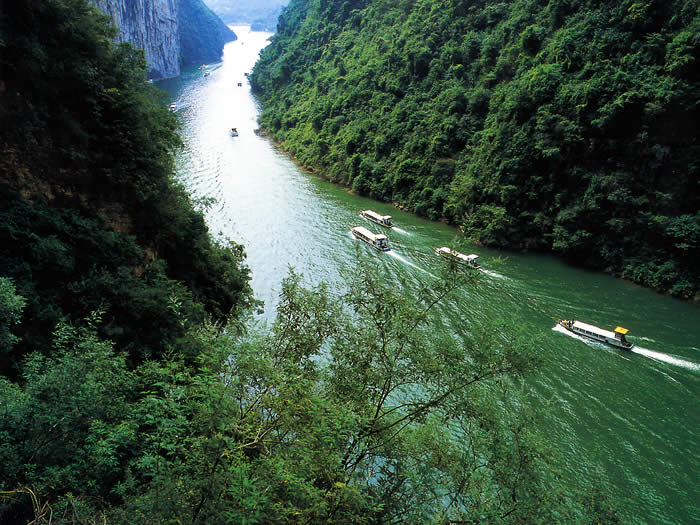 eased passage through the Three Gorges, few Easterners had any reason or desire to make the trip. That all changed in 1938, when Hankou fell to the Japanese and downriver residents made a mass exodus up the Chang Jiang (Yangzi River). Chongqing became China's last wartime capital, and after withstanding 3 years of Japanese bombing, the city never looked back. Very few of the old ramshackle neighborhoods rebuilt after the war have survived "urban improvement," and except for an old prison complex and a few small museums and memorials there is little evidence of earlier eras.
eased passage through the Three Gorges, few Easterners had any reason or desire to make the trip. That all changed in 1938, when Hankou fell to the Japanese and downriver residents made a mass exodus up the Chang Jiang (Yangzi River). Chongqing became China's last wartime capital, and after withstanding 3 years of Japanese bombing, the city never looked back. Very few of the old ramshackle neighborhoods rebuilt after the war have survived "urban improvement," and except for an old prison complex and a few small museums and memorials there is little evidence of earlier eras.
Most travelers come to Chongqing because it's the first or last stop on a Three Gorges cruise. But until recently, levels of sulfur dioxide and suspended air particles were so high that visitors couldn't wait to leave. As the city implements pollution control programs, that seems to be gradually changing. Chongqing's pleasures are modest, but there's enough here to make a 2- or 3-day stay enjoyable. The city is also just a 2-hour bus ride from the Buddhist Grottoes at Dazu.
Lanzhou 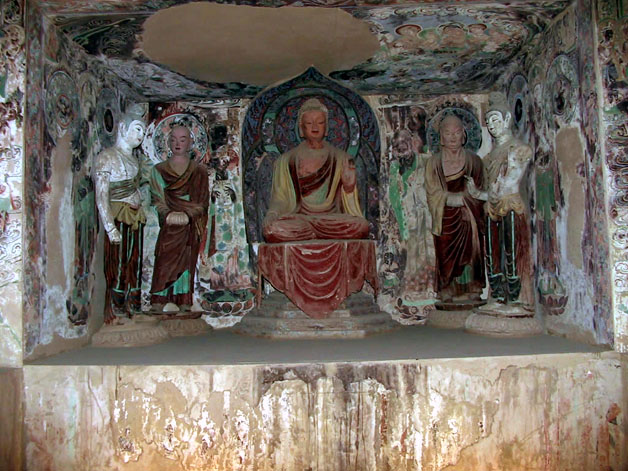
A hot spot on the ancient Silk Road, Lanzhou is the only provincial capital city with the Yellow River flowing through. Lanzhou is abundant with tourist attractions. On the bank of the Yellow River extends the longest riverside road in China, where you can admire the grand River, the First Bridge over the Yellow River, the Watermill Park and the sculpture of the Yellow River Mother, the White Pagoda Park, and the Five-Spring Mountain park. At dusk, standing on the top of Lanshan Mountain, you can have a magnificent view of the Yellow River surrounding the city. The Liujiaxia Hydropower Station and the Bingling Temple in Yongjing County are further away, but the distance will certainly be compensated by the attractions.
Zhongshan Bridge, The First Bridge over the Yellow River, was built in 1907 and completed in 1909. In 1928, to commemorate Dr. Sun Yet-sen, the bridge was renamed Zhongshan Bridge as Zhongshan is another name of Dr. Sun. 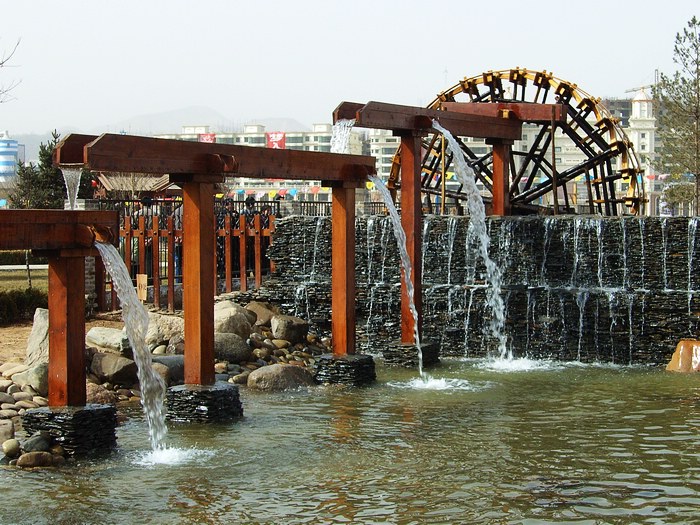
Along the Yellow River, there are two scenes you should not miss. The first is the sculpture of The Mother Yellow River. This is the best sculpture of its kind in China. A baby lies on the bosom of his mother with a naive smile while the mother (unlike most of the mothers in Chinese arts who are old, weather-beaten, kindly but with a touch of sorrow) looks happy and affectionate. The second one is the Waterwheel Garden, where you can get an idea of the old irrigation tool.
The waterwheel was introduced from southern Yunnan Province to Lanzhou by a local who had been an official in Yunnan.
A few steps' further, you will come to the cable car, which connects the south bank to the White Pagoda Hill on the north bank of the Yellow River. The White Pagoda Hill got its name from a white pagoda set up in 1405. Besides the halls and pavilions, there are two museums: the Strange Stone Museum and the Minor Guard Carving Museum.
Bingling Thousand Buddha Caves is on the cliff of Xiaojishi Hill. Located on a branch of Gansu part of the Silk Road, the Bingling Caves were started by some Buddhist monks from as early as the West Jin Dynasty (265-316) though the official carving began in 420.
Shanghai
Shanghai,a vigorous and energetic international metro-polis, welcomes people from all over the world 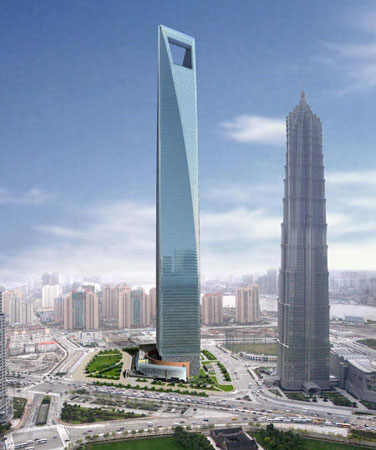 to enjoy its special atmosphere. This modern metropolis with its rich heritage of ancient Chinese culture has much to see and do.
to enjoy its special atmosphere. This modern metropolis with its rich heritage of ancient Chinese culture has much to see and do.
The Bund, also called the Zhongshan Dong Yi Lu (East Zhongshan 1st Road), is a famous waterfront and regarded as the symbol of Shanghai for hundreds of years. It starts from the Baidu Bridge, which is at the connecting point of the Huangpu River and the Suzhou Creek, to the East Jinling Road and winds a 1500 meters (less than one mile) length. Walking along the Bund, which is at the west shore of the Huangpu River, the Oriental Pearl TV Tower can be seen on the opposite side and also the Jin Mao Tower.
Oriental Pearl TV Tower is the modern symbol of Shanghai City. Standing beside the Huangpu River and opposite the Bund with a height of 468 meters (1536 feet), it is the tallest TV tower in Asia. This unusual structure that dominates the skyline is a great attraction to tourists. Moreover, Shanghai Worl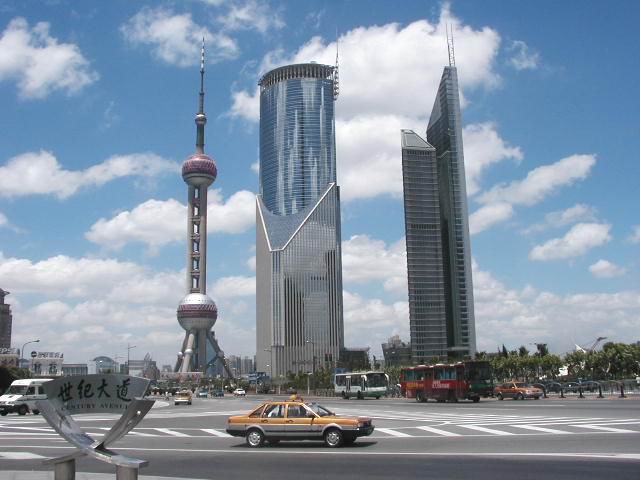 d Financial Center, the highest multi-purpose skyscraper in China, offers the full extent of Lujiazui and Puxi areas, attracting more and more visitors to appreciate the beautiful panorama of modern Shanghai.Jin Mao Tower, located in the center of Lujiazui Finance and Trade Districts in Pudong,is the fourth tallest building of the world and the second tallest building in China. The ingenious combination of the elements of traditional Chinese culture with the newest architectural styles of the time, make the tower one of the best-designed buildings in China.
d Financial Center, the highest multi-purpose skyscraper in China, offers the full extent of Lujiazui and Puxi areas, attracting more and more visitors to appreciate the beautiful panorama of modern Shanghai.Jin Mao Tower, located in the center of Lujiazui Finance and Trade Districts in Pudong,is the fourth tallest building of the world and the second tallest building in China. The ingenious combination of the elements of traditional Chinese culture with the newest architectural styles of the time, make the tower one of the best-designed buildings in China.


